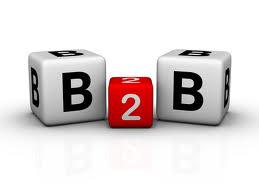The Ice Cream Theory of Communication
If you have a fairly simple product — like soda pop — you can often communicate directly with your market. You figure out who’s likely to buy and craft messages that will appeal to them. Nothing stands between you and your audience. It’s like talking with someone standing nearby on a calm, clear day.
When you have a complicated product or service, on the other hand, you’ll need to deal with an embedded commentariat of current customers, gurus, analysts, pundits, kibbitzers, journalists, and competitors. Each layer of the commentariat can distort your message. It feels like yelling at a person 100 meters away on a windy, foggy, rainy day.
Let’s say you’re introducing a next generation product. You’ll go through an early customer acceptance test to sort out last-minute issues. Once you have everything sorted, you can just put out a press release, right? Wrong.
The issue is that your product is complicated — nobody understands it fully. If your product is very innovative, you have a doubly difficult problem. First, nobody understands it. What does it do? Second, nobody understands its category. What’s it supposed to do? Potential buyers will ask you lots of questions but will then turn to the commentariat to seek verification and validation. So, before you talk to the market, you need to ensure that the commentariat thoroughly understands what you’re doing.
Think of an ice cream cone — it’s wide at the top and narrow at the bottom. The trick with ice cream cone communication is to analyze from the top down but communicate from the bottom up. The top of the cone — the widest part — represents your market. It’s big and broad and tempting. Communicating with the market is your ultimate goal. To get there, you’ll need to work your way through the commentariat.
To organize your communications, work from the top down, with a simple question, “Whom do they trust?” So, who would potential customers trust? It’s a good bet that they would trust the trade press. So take your story to the trade press before you take it to potential customers. Who do the trade press trust? Well, they’ll probably ask to speak to some gurus or analysts who have studied the issue in more detail. So brief the analysts before you take the story to the trade press. Who do the analysts trust? Customers. Analysts want to hear directly from customers, preferably without you in the room. So, prepare your early customers to talk to analysts and then make sure they meet.
And customers — whom do they trust? They’ll talk to many of your employees. Let’s say you’ve told a customer, Angela, that your new product is the best thing since sliced bread. Then Angela talks to John, her favorite consultant on your support line. Angela asks about the hot new product. John says, “I’ve never heard of it”. Unwittingly, John has just undercut the entire communication chain. Angela loses confidence in the product and may even jump to the conclusion that you’re lying.
So always start your communications with your own employees. They’re the narrow, bottom section of the ice cream cone. Make sure they understand the key messages associated with the product. Then work your way upward and outward in the cone, to the interlinked audiences of the commentariat. It will take some time to get to the top of the cone — your target market – but it’s well worth the effort.
Branding: Why Buy Eyeballs That Won’t Buy?
I used to work for a CEO who liked to go to cocktail parties. When he introduced himself to people, he often mentioned the fact that he was the CEO of XYZ Corp., the well-known B2B software company. People looked at him blankly and said, “I’ve never heard of your company.”
The next morning, the CEO would inevitably call me to complain: “People have never heard of our company. I’ve told you this before. When are you going to fix it?” I typically responded with a question or two: “Does the person you met want to do business with us? Do they want to buy something?” The answer was always no. “So why”, I continued “should we spend money to communicate with them? What’s the return?”
I’m surprised by how many CEOs want their company to become a household name, even though most households will never buy from them. This is another subtle difference between B2B and B2C companies. With a lot of B2C brands – Coke, Nike, Levis, Red Bull, Amazon — virtually any household anywhere in the world could possibly become a customer. So it makes sense to become a household name by spending hugely on advertising and sponsoring high visibility events.
B2B companies, on the other hand, usually have much more defined markets. In the last major B2B company I worked for, Lawson Software, we could identify approximately 30,000 companies in our target markets, in our geographies that might actually buy from us. We put them all in a database, made some educated guesses about when they might buy, and starting contacting them. We kept sifting through our data to improve our probability rankings and contacted high probability buyers frequently.
For me, it didn’t matter if Lawson was known in every household. It mattered a great deal if we were known by the 30,000 companies that might actually buy from us. That’s where we invested our marketing development dollars and targeted our lead generation campaigns. If you work for a B2B company, I’d advise a similar approach. If that means that people at cocktail parties don’t know who you work for … well, take a brochure with you.
Branding: B2C versus B2B
Most of my client are business-to-business (B2B) companies. They make things — mainly software — that help other businesses perform more effectively. Some of my clients want to emulate the “flashier”, “sexier” communications of the business-to-consumer (B2C) world. They ask, “Why can’t we be cool like the consumer companies are?” My answer is that they can be totally cool but they have to remember the differences between B2B and B2C branding. A B2C company can deliver emotional, product-centric messages. While a B2B company can also play on emotions, it needs to do more. It also needs to deliver a logical, financial message and many more company-centric messages. B2B requires a more complicated branding strategy.
The first big difference between B2B and B2C is when the benefit is delivered. In the B2C world, the benefit is often delivered at the same time as the purchase decision. You buy a soft drink (purchase decision), you drink it, and you immediately get the benefit (sugar high). In the B2B world, on the other hand, the benefit is often delivered months after the purchase decision. That’s certainly true in enterprise software. Your messaging still needs to convince the buyer that the product is right. But it also needs to convince the buyer that your company will effectively deliver the benefit many months later. Thus, you need far more company-centric messages than a B2C company would.
The second big difference is the number of decision makers. In B2C, it’s often one person. I don’t need to call a committee meeting to buy a soft drink. In B2B, on the other hand, many buyers get involved. Years ago, I learned a “buying influence” model originated by the Miller Heiman consulting group. According to Miller Heiman, there are three buying influences: the user buyer, the technical buyer, and the financial buyer. In the B2B world you need specific message for each group. To learn about these messages, take a look at the video.
Redefining the Elevator Pitch
An elevator pitch should be a brief statement of your value proposition that makes the recipient want to learn more. You’re supposed to deliver it in the span of a normal elevator ride. It should be just enough to open the (metaphorical) door and get you invited in.
It’s a good idea to have an elevator pitch. We’re all pressed for time and most of us don’t want to sit still for a long-winded, detailed presentation. But so many of the elevator pitches I’ve heard lately seem to get it backwards. The pitches are about me rather than about you.
It’s always better to talk about your audience rather than about yourself. That’s true in a speech. It’s true on a date. It’s true with elevator pitches. If you want to sell a watch, don’t talk about the watch. Talk about how it feels (to your audience) to wear the watch.
When time is brief, we often default to talking about me rather than you. It’s easy — I know more about me than I know about you. So how do you avoid this in an elevator pitch? Simple. You start by asking a question. That puts the focus on the other person. He or she can actually help you deliver the elevator pitch. You get a double benefit. While you deliver the elevator pitch, a few insightful questions can also qualify the customer.
You can learn the technique in the video.
Information Science: Less Is More
If you’re following this year’s presidential campaign, you’re probably experiencing a fundamental law of information science: the more
frequently a signal is repeated, the less information it carries. The law has many practical implications. It’s why you can buy a vowel on Wheel of Fortune. Vowels are frequently repeated so they carry very little information. So you can buy one cheap.
The law is also why people start to ignore you if you keep repeating yourself. You’re adding no new information to the conversation, so why pay attention? This is a big problem for the presidential campaign. The two parties have been repeating essentially the same thing for two years now. The candidates have had nothing new to say for months. The talking heads repeat the same signals over and over but they’re adding no new information to the party. For many of us, it’s time to tune out.
There’s a difference, however, between signals and messages. Most companies should keep their core message consistent over time. Consistency builds trust and trust builds brands. To keep the message resonating with your audience, however, you’ll need to change the signal from time to time. In other words, you’ll need to find new ways to say the same thing. In brand building, this is what creativity is all about. You’re not trying to create a new message (in most cases). You’re trying to find new ways to deliver the same message so the audience will continue to listen.
Just think of how many times you’ve seen the signal, “Safety First”. It’s a good message but a tired signal. It’s become part of the wallpaper. We no longer pay attention to it. If you want us to behave safely, you’ll need to change the signal. How about this: “You Don’t Want to Die, Do You?”
Now it’s time for me to change the signal while keeping the message the same. Stop reading and click on the video.




